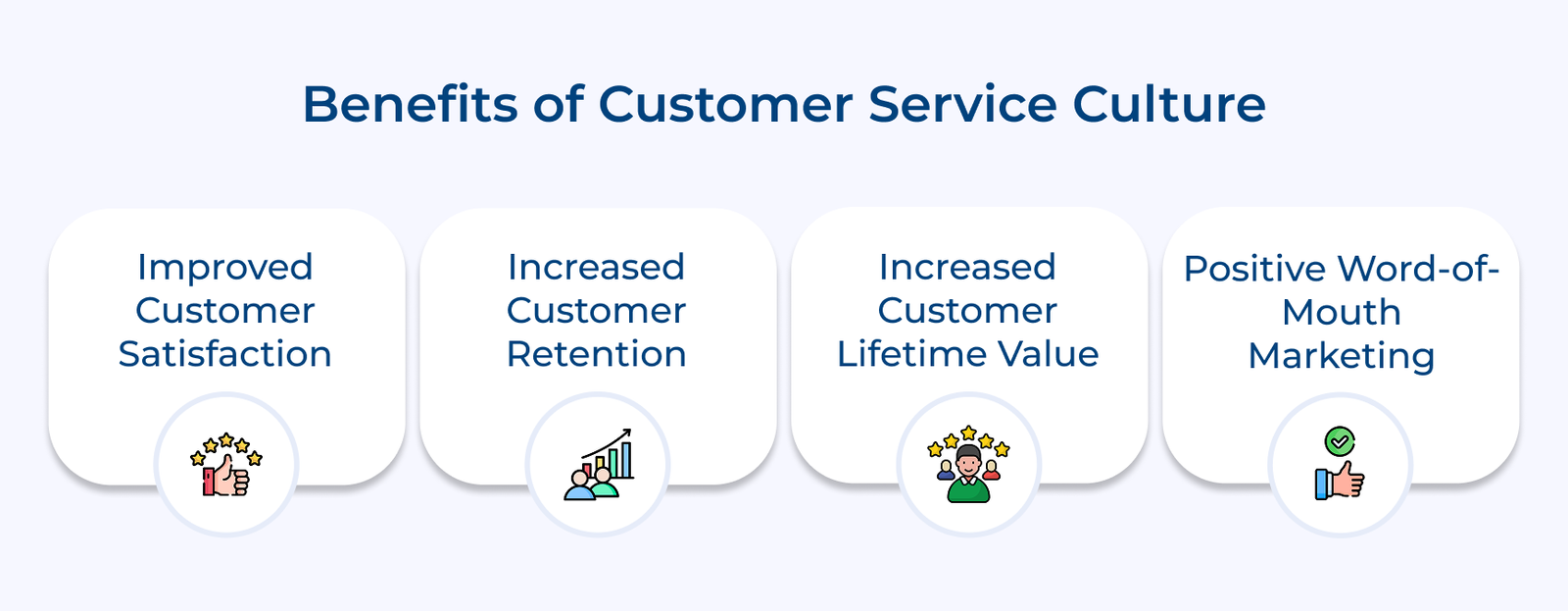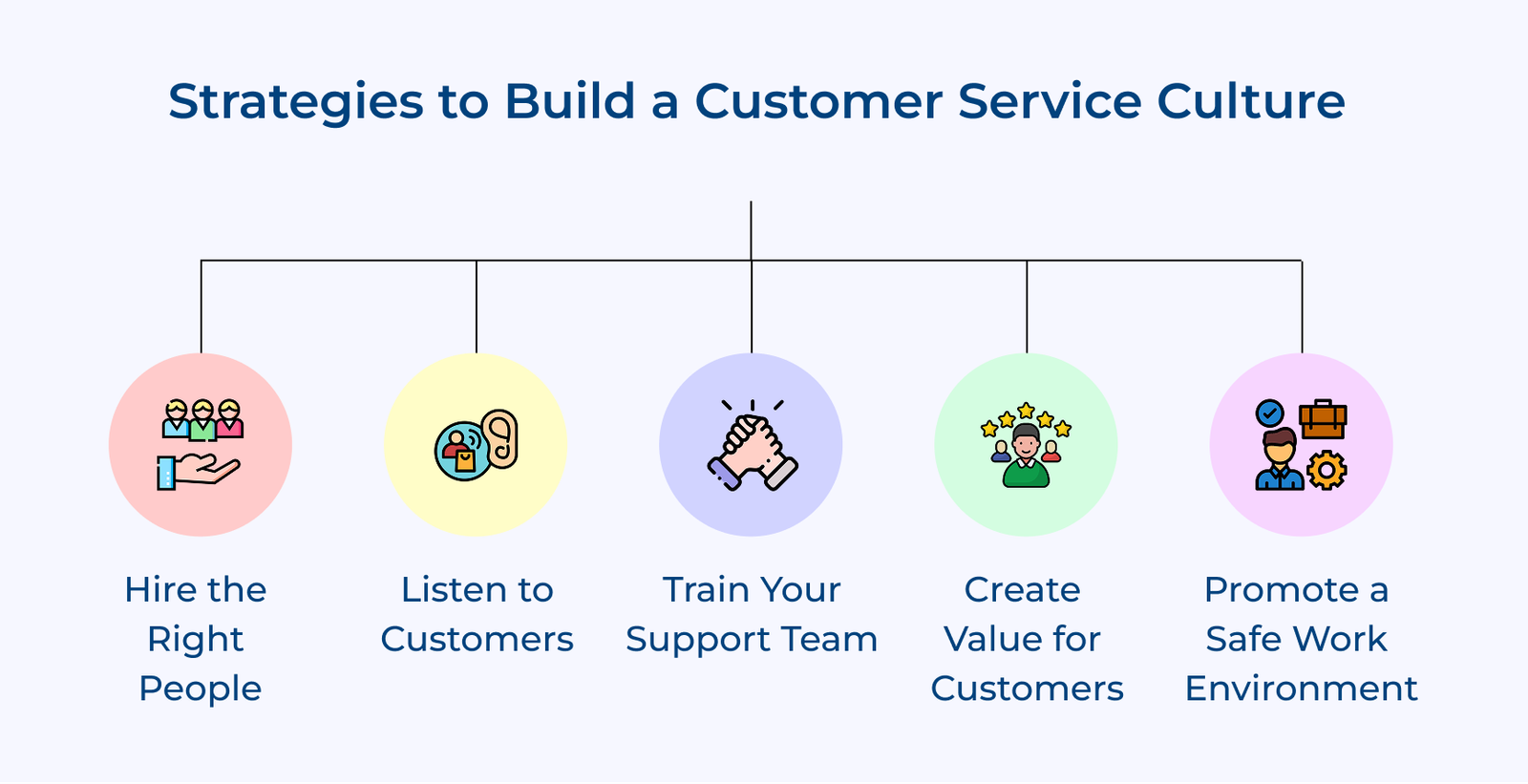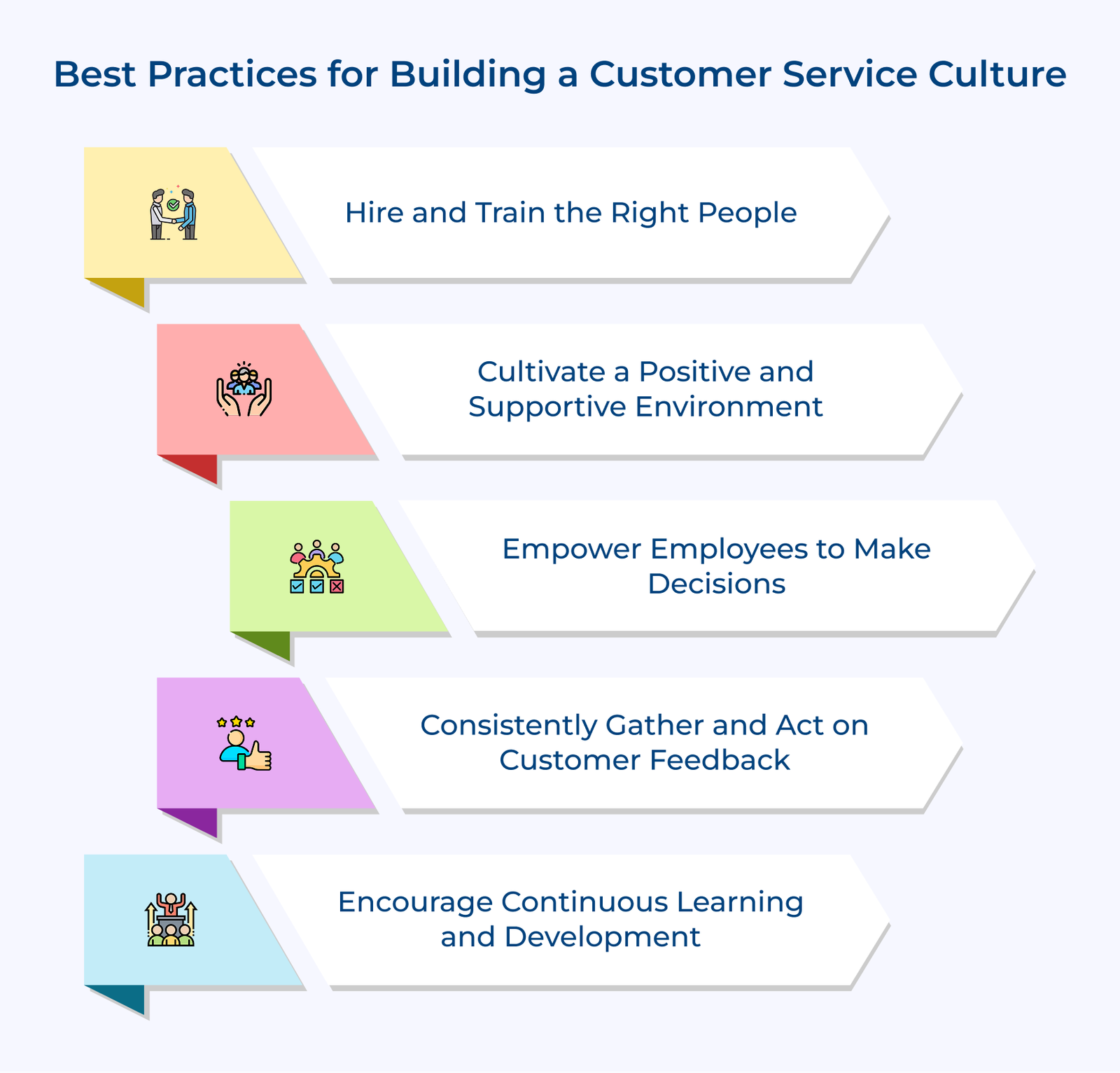A. Strategies for Company Executives
A customer executive has a huge role in ensuring the customers are happy, bringing in new ones and shaping how people see the company. Their job isn’t limited to just solving problems. They have to set the tone for how the whole team treats customers. Let’s go through some ways to build and sustain such a culture.
1. Hire the right people: If you want to build an organization that is customer-centric, you have to ensure you hire the right people. The employees should have excellent communication skills, empathy and problem-solving abilities. The most important one is to have a genuine desire to help customers.
2. Remove people who aren’t working out: You must make peace with the fact that not everyone you hire will excel in customer service roles. The business must identify and address employees who are underperforming or lack empathy towards customers.
3. Listen to customers: Understanding the needs and expectations of your customers well is something that is non-negotiable. It is paramount if you want to deliver a top-notch service. Make it a part of your culture that employees at all levels must actively listen to customer feedback. The information they gain will be helpful to improve your products, services and overall customer experience.
4. Talk about customers: Make customers the center of the discussions you have in your organization. Encourage your teams to regularly bring up customer success stories, challenges and insights. It will help in promoting a customer-centric mindset among employees and remind them of the importance of their role in delivering excellent service.
5. Make customer service part of company goals and vision: Make sure to have customer service as one of your company’s core goals. It shouldn’t be treated as an afterthought but as a standard everyone is accountable for. It is only when you make it a priority, you send a clear message to employees that exceptional customer service is non-negotiable.
6. Build customer-centric focus into marketing, sales and product functions: Customer service should not only be limited to your support teams. The culture should be set in a way that customer-centricity is infused across all functions of your organization. Train marketing as well as the sales teams to understand customer pain points and address them effectively.
7. Elevate your service teams: Rewarding the efforts of delivering outstanding customer service is something that should not be skipped. How else do you think your service teams will be motivated to serve better? You must implement regular training programs to help them enhance their skills and stay up-to-date with industry trends.
B. Strategies for Customer Service Leaders
The customer service leader has to lead by example and shoulder the responsibility to develop a customer-centric culture within the organization. Below are some effective strategies establish such a culture:
1. Push authority to the front lines: Make sure your customer service reps are empowered to make decisions and resolve issues independently. You must give them the authority to go above and beyond to satisfy customers; it’s only then that they will be able to provide a seamless experience.
2. Train and support service skills: As a leader, you must make it a priority to invest in customer service training for your team. They should be equipped with essential skills such as active listening, empathy, problem-solving, and effective communication.
3. Advocate for whole team support: The culture you develop should be such that the collaboration and teamwork within your customer service department remain seamless. When your team members support and assist each other, it promotes a sense of camaraderie.
4. Be the voice of the customer for your company: The customer service leader has to serve as the voice of the customer within the business. They must also share customer feedback, insights, and trends with other departments. These insights help the business in making strategic decisions that align with customer needs and expectations.
5. Create a safe environment for your team: The environment you create should be safe and supportive for all. Your team members feel comfortable in expressing their concerns and ideas. It is important to encourage open and honest communication by actively listening to your employees’ feedback. If there are any issues, they must be addressed promptly.
C. Strategies for Customer Service Professionals
Here are some strategies for customer service professionals that will help them excel in their roles and create a positive customer service culture:
1. First, seek to listen: Good customer service starts with listening to the customers. Businesses must devote the time to genuinely understand their needs, concerns and feedback. It is only through actively listening that businesses can identify opportunities for improvement and provide personalized solutions.
2. Work for the customer’s value: Creating value for the customers has to be one of the priorities if you aspire to deliver top-notch service. The modern customers expect businesses to understand their unique needs and tailor their approach to meet their expectations. So you must be ready to walk the extra mile to exceed their expectations, be it by offering personalized recommendations, resolving issues promptly, or providing proactive assistance.
3. Share stories internally: Sharing success stories and positive customer experiences internally is one of the best ways to both motivate your team. It will not only boost morale but also give practical examples of strategies that can be replicated in future interactions.
4. Learn to speak the language of your business: If you or your employees don’t understand what your company actually does, you’ll always struggle to give customers the right answers. Take time to learn about the products, services, and systems behind them. The better you know how things work, the easier it is to explain them clearly and solve problems without passing customers around.
5. Be visible in your company: An ideal customer service professional should be visible and accessible across the organization. Build relationships with colleagues in different departments and look for ways to collaborate. The more you understand their responsibilities, the better you can connect the dots and see how each role shapes the customer’s experience.
Examples of Exceptional Customer Service Culture
Check out the examples of companies that have set the standard for exceptional customer service, highlighting the principles and practices that drive their success.
1. Zappos
Zappos is quite renowned for delivering exceptional customer service. The company puts a lot of emphasis on creating a culture that prioritizes customer satisfaction above everything else.
They empower as well as encourage their customer service reps to go above and beyond to serve their customers well.
2. Southwest Airlines
Southwest Airlines is known for providing positive and enjoyable experiences to their passengers. Their culture is reflected in the way their employees behave, who demonstrate a genuine commitment to helping customers. Be it the polite flight attendants or the gate agents assisting passengers with a smile, Southwest consistently goes the extra mile to make customers feel valued.
3. Amazon
Amazon has revolutionized online shopping and yet they didn’t compromise with the quality of their service. Their site has always been simple to navigate, orders arrive swiftly and even the returns are straightforward. Providing the perfect balance of convenience and reliability is what keeps their customers coming back.
4. Nordstrom
Nordstrom has built its reputation on service that feels personal and human. Instead of treating shopping as a transaction, the store makes it easy for customers to feel taken care of. Their focus is not narrowed to just on selling clothes but on making every interaction comfortable enough that customers want to keep coming back.
Best Practices for Building a Customer Service Culture
The following are some of the best practices that help teams stay consistent, keep customers at the center and make service feel genuine at every touchpoint.














